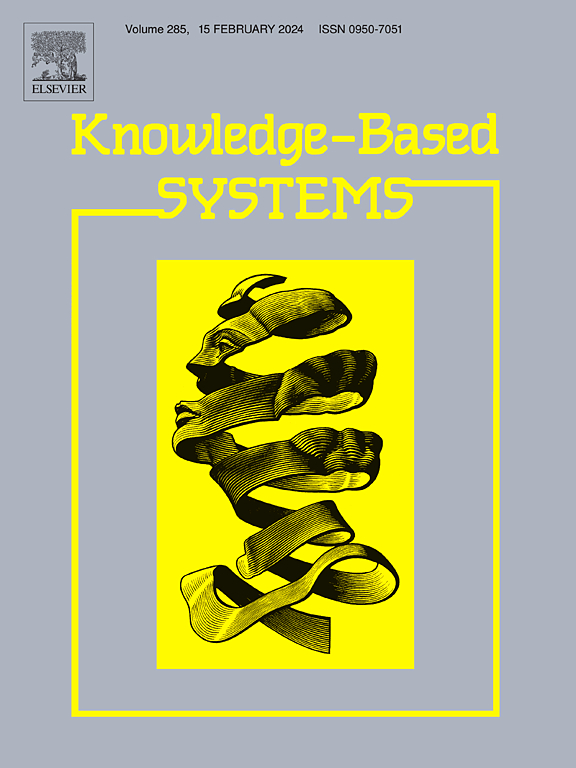反思时间序列预测的自我监督学习:时间视角
IF 7.2
1区 计算机科学
Q1 COMPUTER SCIENCE, ARTIFICIAL INTELLIGENCE
引用次数: 0
摘要
自监督学习因其学习有意义表征的能力而备受关注。最近的进步为时间序列预测引入了自监督方法。然而,由于存在两个主要缺点,这些努力面临着局限性。首先,这些方法往往借鉴了视觉和语言领域的技术,却没有充分解决时间序列数据固有的独特时间依赖性问题。其次,时间序列数据的分布经常会随时间发生变化,这给准确预测带来了挑战。针对这些问题,我们提出了专为时间序列预测设计的自监督学习框架 TempSSL。TempSSL 将时间序列数据分为上下文(历史数据)和目标(未来数据),并采用两种预训练策略:(1)时序掩蔽建模(TMM),旨在通过基于历史上下文重构未来时间序列来捕捉时序依赖性;(2)时序对比学习(TCL),将上下文和目标作为正样本,以增强判别表征并减轻时间序列内的分布偏移。TempSSL 的创新在于两个关键方面。首先,它通过设计特定的预训练任务,强调了时间序列预测的时间依赖性的重要性。其次,它有效地整合了对比学习和掩蔽建模,利用它们各自的优势,开发出具有很强的实例可辨别性和局部可感知性的时间序列表示。在七个广泛使用的基准数据集上进行的大量实验表明,TempSSL 的性能始终优于现有的自监督和端到端预测方法,提高了 1.92% ∼ 78.12%。此外,TempSSL 在天然气需求预测中的成功应用进一步证明了它的实用有效性。本文章由计算机程序翻译,如有差异,请以英文原文为准。
Rethinking self-supervised learning for time series forecasting: A temporal perspective
Self-supervised learning has garnered significant attention for its ability to learn meaningful representations. Recent advancements have introduced self-supervised methods for time series forecasting. However, these efforts have faced limitations due to two primary drawbacks. Firstly, these approaches often borrow techniques from vision and language domains without adequately addressing the unique temporal dependencies inherent in time series data. Secondly, time series often show that the distribution shifts over time, which makes accurate forecasting challenging. In response to these issues, we propose TempSSL, a self-supervised learning framework designed for time series forecasting. TempSSL divides the time series data into context (history data) and target (future data), employing two pre-training strategies: (1) Temporal Masked Modeling (TMM) designed to capture temporal dependencies by reconstructing future time series based on historical context; (2) Temporal Contrastive Learning (TCL) employs context and target as positive samples to enhance discriminative representations and mitigate distribution shifts within the time series. TempSSL’s innovation lies in two key aspects. Firstly, it underscores the importance of temporal dependencies for time series forecasting by designing specific pre-training tasks. Secondly, it effectively integrates contrastive learning and masked modeling, leveraging their respective strengths to develop time series representation with strong instance discriminability and local perceptibility. Extensive experiments across seven widely used benchmark datasets demonstrate that TempSSL consistently outperforms existing self-supervised and end-to-end forecasting methods, achieving improvements ranging from 1.92% 78.12%. Additionally, TempSSL’s practical effectiveness is further demonstrated through successful application in natural gas demand forecasting.
求助全文
通过发布文献求助,成功后即可免费获取论文全文。
去求助
来源期刊

Knowledge-Based Systems
工程技术-计算机:人工智能
CiteScore
14.80
自引率
12.50%
发文量
1245
审稿时长
7.8 months
期刊介绍:
Knowledge-Based Systems, an international and interdisciplinary journal in artificial intelligence, publishes original, innovative, and creative research results in the field. It focuses on knowledge-based and other artificial intelligence techniques-based systems. The journal aims to support human prediction and decision-making through data science and computation techniques, provide a balanced coverage of theory and practical study, and encourage the development and implementation of knowledge-based intelligence models, methods, systems, and software tools. Applications in business, government, education, engineering, and healthcare are emphasized.
 求助内容:
求助内容: 应助结果提醒方式:
应助结果提醒方式:


